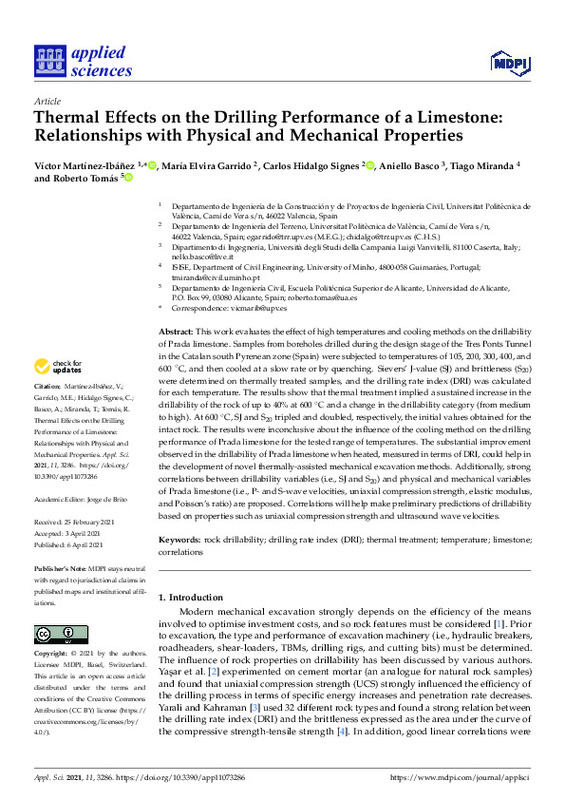JavaScript is disabled for your browser. Some features of this site may not work without it.
Buscar en RiuNet
Listar
Mi cuenta
Estadísticas
Ayuda RiuNet
Admin. UPV
Thermal Effects on the Drilling Performance of a Limestone: Relationships with Physical and Mechanical Properties
Mostrar el registro completo del ítem
Martínez Ibáñez, V.; Garrido De La Torre, ME.; Hidalgo Signes, C.; Basco, A.; Miranda, T.; Tomás, R. (2021). Thermal Effects on the Drilling Performance of a Limestone: Relationships with Physical and Mechanical Properties. Applied Sciences. 11(7):1-20. https://doi.org/10.3390/app11073286
Por favor, use este identificador para citar o enlazar este ítem: http://hdl.handle.net/10251/176400
Ficheros en el ítem
Metadatos del ítem
| Título: | Thermal Effects on the Drilling Performance of a Limestone: Relationships with Physical and Mechanical Properties | |
| Autor: | Basco, Aniello Miranda, Tiago Tomás, Roberto | |
| Entidad UPV: |
|
|
| Fecha difusión: |
|
|
| Resumen: |
[EN] This work evaluates the effect of high temperatures and cooling methods on the drillability of Prada limestone. Samples from boreholes drilled during the design stage of the Tres Ponts Tunnel in the Catalan south ...[+]
|
|
| Palabras clave: |
|
|
| Derechos de uso: | Reconocimiento (by) | |
| Fuente: |
|
|
| DOI: |
|
|
| Editorial: |
|
|
| Versión del editor: | https://doi.org/10.3390/app11073286 | |
| Agradecimientos: |
The authors wish to acknowledge David Benavente and Juan Carlos Canaveras from the University of Alicante, for their valuable help on mineralogical and petrographic description of the rock. Additionally, Kreum SA, Ayesa ...[+]
|
|
| Tipo: |
|









